COP30: A Critical Moment to Adopt Climate Adaptation Indicators
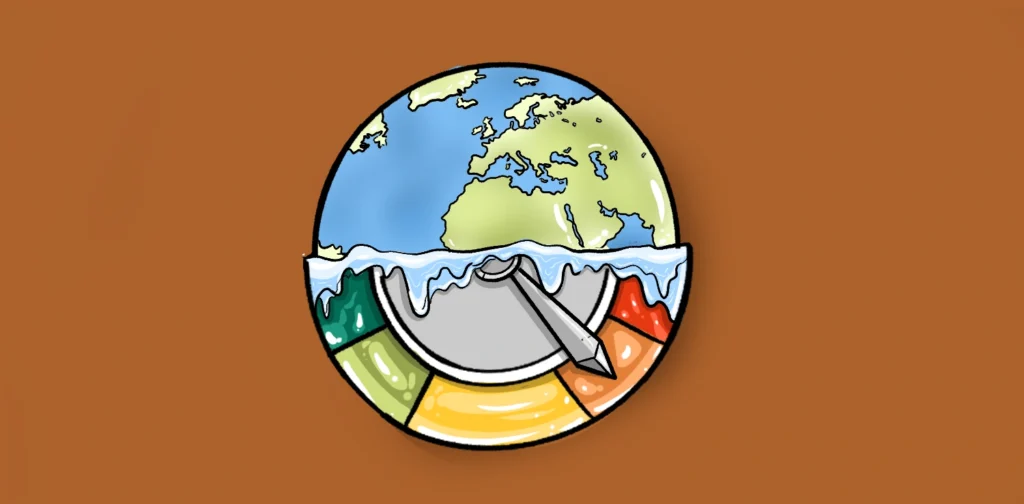
Illustration: Irhan Prabasukma.
As the impacts of climate change intensify, we must urgently take decisive and bold action to protect vulnerable people and communities. At recent COPs—the premier multilateral process for climate governance—the parties have recognized that adaptation is just as important as reducing greenhouse gas (GHG) emissions. COP30 in 2025 is hailed as the “Adaptation COP,” with critical decisions expected on climate adaptation agendas.
Understanding Climate Adaptation
Climate adaptation is about protecting societies, communities, and ecosystems from the intensifying impacts of climate change. Some examples include reinforcing levees and embankments to prepare for severe flooding or promoting urban greening to mitigate heat stress.
The impacts of climate change manifest differently from country to country and from community to community, depending on their geographic location, socio-economic conditions, and adaptive capacity. While small island countries experience the impacts of sea-level rise, highland countries are affected by melting glaciers. Due to this stark diversity, measuring global progress on climate adaptation is a significant challenge, both scientifically and politically.
In a letter on October 23, the Brazilian Presidency of COP30 argues that adaptation is the “next step in human evolution”, emphasizing the importance of international cooperation.
The letter says, “Our ability to implement the adaptation provisions of the UNFCCC and the Paris Agreement through enhanced international cooperation will determine whether we evolve not only to survive, but to become the best version of humanity – grounded in dignity, justice and solidarity.”
Adopting Adaptation Indicators at COP30
Unfortunately, the Paris Agreement on climate change lacks a concrete, measurable goal for adaptation. Mitigation has the 1.5°C temperature target, which serves as an objective and quantifiable goal. In contrast, the Global Goal on Adaptation (GGA), the overarching adaptation goal of the Paris Agreement, is stated in a very generic form: “enhancing adaptive capacity, strengthening resilience and reducing vulnerability to climate change.”
Efforts to fill this gap began in 2019. Since then, the parties have gradually developed a common understanding of the need to establish concrete adaptation targets and metrics. This approach is similar to other sustainability policies, such as the Sustainable Development Goals or the Global Biodiversity Framework.
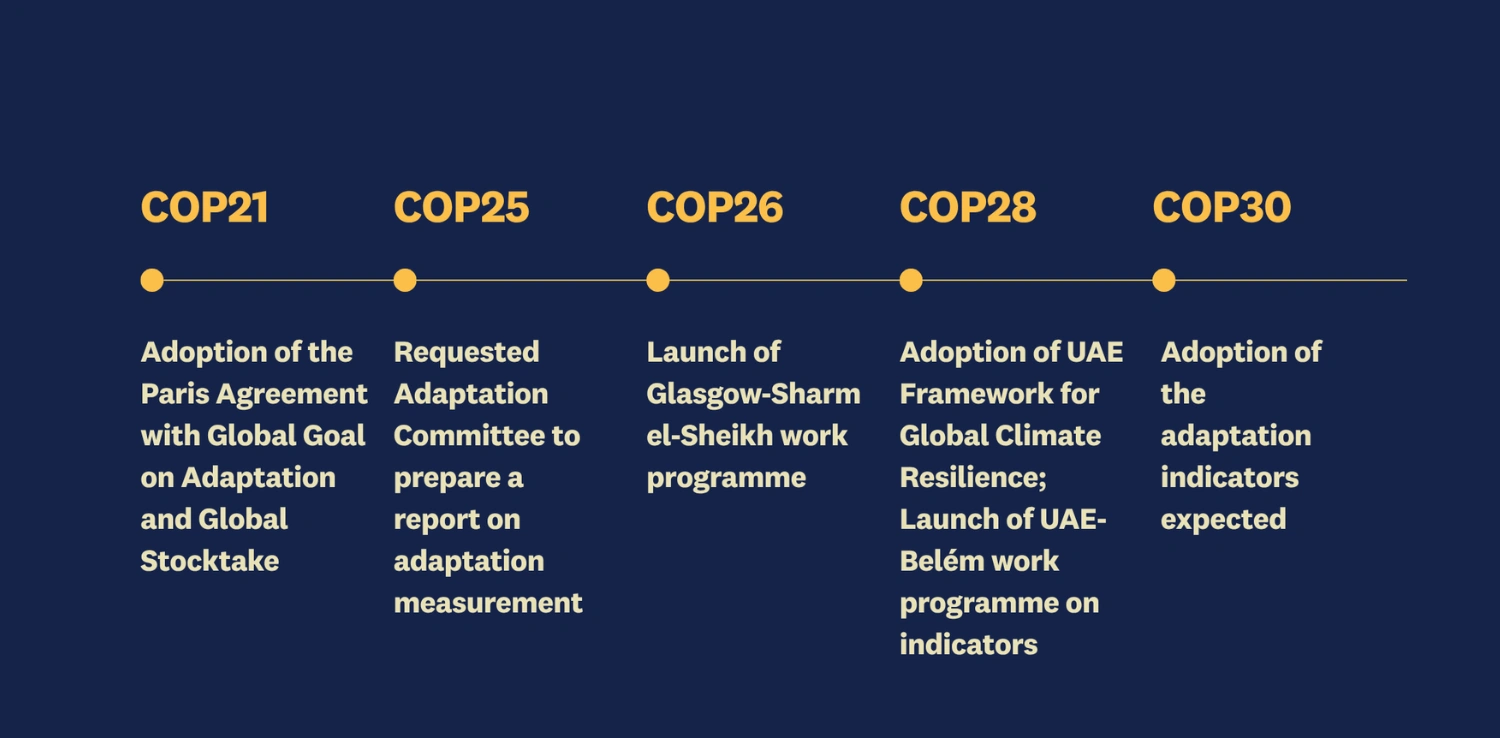
At COP28 in 2023, the UAE Framework on Global Climate Resilience adopted 11 targets that essentially break down the Global Goal on Adaptation, ranging from food and water resilience to adaptation planning and implementation.
Following this, the parties have been discussing the adaptation indicators that function alongside the set targets. They have also prepared a draft of 100 indicators that awaits finalization and agreement at COP30 as one of the main agenda items.
At COP30, countries are expected to agree on climate adaptation indicators, which will send a strong signal to the world about the essential role of climate adaptation in enhancing resilience and protecting the most vulnerable people and communities across various sectors such as food, water, and health. This move is expected to be a major outcome of this year’s COP.
Urgency for Climate Adaptation Indicators
Why do adaptation targets and indicators matter? Adaptation is a country-driven process to address each country’s unique challenges. One might then think that adaptation does not require detailed international targets common to all. However, without clear targets or global indicators, it is challenging to assess whether the world is making progress on adaptation and resilience.
The most significant benefit of establishing targets and indicators will be improved transparency and accountability for climate adaptation. It will be a step up from, for instance, the generic and qualitative assessments in the progress review of the Paris Agreement’s goals at COP28 (the Global Stocktake held every 5 years).
Additionally, as the Brazilian Presidency also emphasizes in its letter, international support and cooperation are key. Internationally-agreed climate adaptation indicators will help the parties share a common understanding and enable an objective discussion on how each project and activity contributes to the progress. This can foster mutual understanding and build trust among the countries tackling climate adaptation.
Another benefit, especially for practitioners, is that the adaptation indicators will present more precise guidance. Therefore, the many actors participating in adaptation can advance it more effectively. For example, private companies will be able to determine whether and how their operations contribute to climate adaptation. By reporting their adaptation contributions to the market more clearly, private companies can better attract sustainability finance and investment.
As such, an agreement on robust climate adaptation indicators at COP30 would be a key milestone in moving from framework development to concrete, widespread implementation by diverse actors.
Continuous Improvement and Mutual Learning
Lastly, we must recognize that climate adaptation indicators cannot encompass everything necessary to protect vulnerable people and communities. They are designed to apply to all parties, but as we noted above, adaptation challenges are unique from one context to another. Climate change impacts intensify and change over time. So, there are challenges not yet covered by the indicators, such as those specific to small islands, coastal areas, or high mountains.
Narratives and good practices of adaptation play a key role in evaluating and learning from climate adaptation actions. When the parties agree on indicators, they should also establish a shared understanding of how to use and interpret them.
Ultimately, targets and indicators will function most effectively when they facilitate detailed and evidence-based conversations and mutual learning among the parties and other stakeholders involved in adaptation, enabling us to collectively implement more effective and impactful climate adaptation actions.
The views expressed in this article are those of the author and do not necessarily reflect the views of the United Nations University.
Editor: Nazalea Kusuma & Kresentia Madina
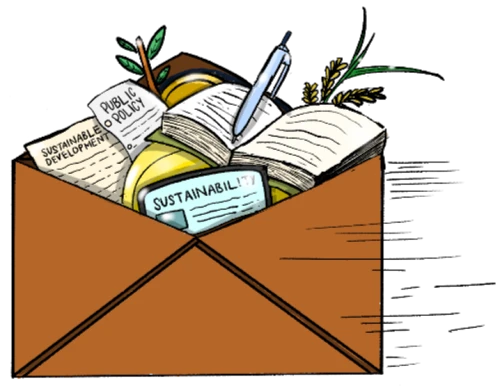
Join Green Network Asia – An Ecosystem of Shared Value for Sustainable Development
Support Green Network Asia’s movement to create positive impact for people and the planet through public education and multi-stakeholder advocacy on sustainability-related issues and sustainable development.
Become a Member NowNaoyuki Okano
Naoyuki is a Programme Officer in the Governance for Climate Change and Sustainable Development (GCSD) program at UNU-IAS (United Nations University Institute for the Advanced Study of Sustainability).


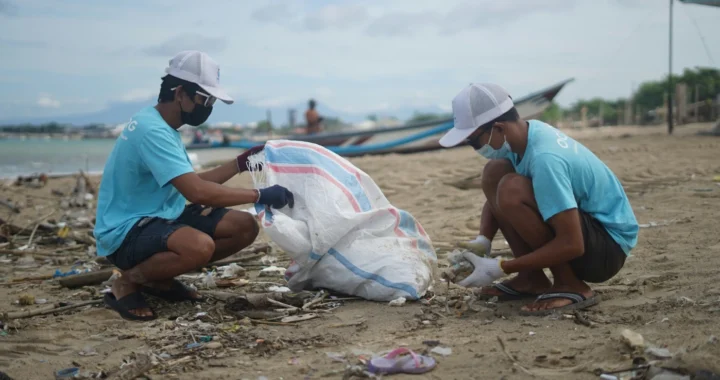 How Citizen Science Can Help Address Plastic Pollution
How Citizen Science Can Help Address Plastic Pollution  Luxury Tourism Threatens the Maasai Mara
Luxury Tourism Threatens the Maasai Mara 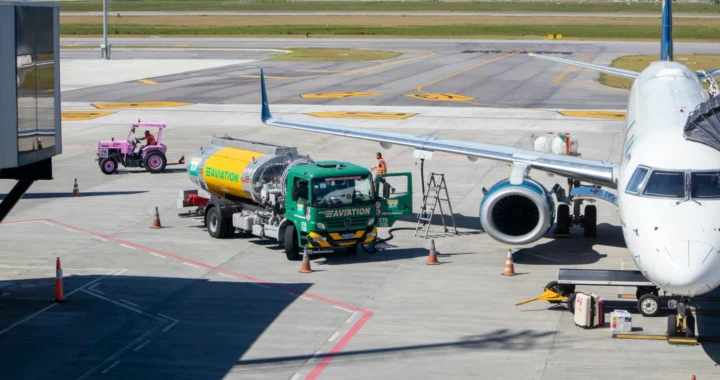 South Korea’s Mandate on Obligatory Use of Sustainable Aviation Fuel (SAF)
South Korea’s Mandate on Obligatory Use of Sustainable Aviation Fuel (SAF)  New Zealand Takes a Step Against the Oceanic Degradation of Hauraki Gulf
New Zealand Takes a Step Against the Oceanic Degradation of Hauraki Gulf  The Inequality-Pandemic Cycle amid Rising Global Vulnerability
The Inequality-Pandemic Cycle amid Rising Global Vulnerability  Climate Change and Poverty: Looking into the Overlapping Issues
Climate Change and Poverty: Looking into the Overlapping Issues